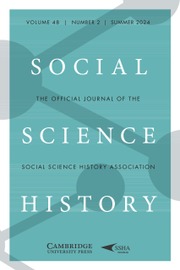Article contents
Logics of History as a Framework for an Integrated SocialScience
Published online by Cambridge University Press: 04 January 2016
Abstract
This essay surveys the contributions of William H. Sewell Jr.'sLogics ofHistory and concludes that the book sketches a compelling agendafor an integrated historical social science. The author first summarizesSewell's ontological and epistemological claims concerning social structure andevent, history and temporality, and sociohistorical causality. The author thendiscusses five main areas in which ambiguities in Sewell's approach might beclarified or his arguments pushed farther. These concern (1) the relationshipbetween historical event and traumatic event; (2) the idea of the unprecedentedevent or “antistructure”; (3) the theory of semiosis underlyingSewell's notion of a multiplicity of structures; and (4) the compatibilities anddifferences between the concepts of structure andmechanism(here the author argues that social structures arethe distinctive “mechanisms” of the human or social sciences).Finally, (5) Sewell's call for “a more robust sense of the social”in historical writing locates the “social” mainly at the level ofthe metafield of power, or what regulation theory calls the mode of regulation;the author suggests a possible integration of this society-level concept withPierre Bourdieu's theory of semiautonomous fields.
Information
- Type
- Special Section: Logics of History
- Information
- Copyright
- Copyright © Social Science History Association 2008
References
- 4
- Cited by

